| Topic: The Anti-Big Bang...a Consideration? | |
|---|---|
|
We are mostly all familiar with the concept of the Big Bang.
That the Universe started out very small, exploded and has been expanding ever since. It occurred to me this evening that the Universe might have started out very small and "imploded". The more I think about it the more sense it makes. Consider that no matter which direction you look, the Universe dates to 13.7 billion years. That is because what we understand about light and time dictates it as fact. The idea is that we can't see beyond 13.7 billion years because light did not exist. It puts a limit to the size of the Universe as the limit of its current expansion. We can't see past it because the Universe hasn't explosed that far yet. But... Lets say the Universe imploded. Lets say it is still imploding. Now, the limit of our ability to detect is 13.7 billion years but that limit will never change because it it the outer shell of the singularity in which we reside. The expansion is not an explosion but an implosion. An implosion at quantum levels. This would explain quite a few things that can't currently be recitified. Like Vacuum Energy, strings and the constant limit of the edge of the known Universe. Sadly, to prove any of it any way we need a perspective measurement from a location a significant distance from Earth, like a billion light years away. Out of our reach. We would also need a perspective from below quantum to determine if the Vacuum energy is exanding or contracting space. Again, out of our reach. All I'm saying is to consider for a moment that the big bang didn't result in an explosion of space but an implosion of space and everything we see is distorted from our relative perspective. |
|
|
|
|
|
This sort of stuff tends to go over my head a bit. But is there a reason why it must be 1 or the other?
Is it not somehow equally possible, that it is both simultaneously |
|
|
|
|
|
Edited by
Tom4Uhere
on
Fri 03/22/19 10:54 PM
|
|
|
This sort of stuff tends to go over my head a bit. But is there a reason why it must be 1 or the other? Is it not somehow equally possible, that it is both simultaneously This was just an idea I had, a thought. As far as I'm concerned it could actually be both or neither. I do think our perspective restricts our understanding. I'm sure if we could move to a different part of the Universe and take some readings we would have a different understanding. In the reality of life, none of it really matters tho. I just happen to like science and science fiction. My mind tries to wrap itself around the concepts I get exposed to. I try to make sense of things, so to speak. The Big Bang and the Expansion makes no sense to me. I could be really dense but other people also have difficulty with the idea. That's why it resides entirely in Theory. One bit of reasoning is how can the Universe be expanding if all outer points are the same at 13.7 billion years? Then you have the issue of an explosion. Explosions happen from a small space outward. You can backtrack an explosion to an initial spot. As you look back in time, it collapses to a single initiation spot. Yet the Universe at its outer edges (back in time) are all the same initiation spot (13.7 billion years). Then you look at the vacuum energy theory. Aka: Zero Point Energy. Zero point is a dot (basically). It is one dimension. In ZPE, energy creates matter and antimatter which annihilate each other. What if our perspective is off, wrong, incorrect? What if ZPE is the contraction of matter into energy or energy into matter. More rationality: Imagine the Universe is a bubble, a very small bubble. Inside that bubble is a force that implodes constantly. Imploding within the bubble will not change the bubble itself, only the inside of the bubble. The edge of the bubble remains constant as the area within the bubble implodes deeper and deeper. A view from inside that bubble would show all edges to be the same. 13.7 light years away at our present perspective. Yet from OUR point of reference it would appear that the space around us is expanding. From outside the bubble, it may appear as the same bubble as ever. Its not growing in size outward, only inwardly. |
|
|
|
|
|
I can imagine an implosion from a large diameter source, where everything (matter) has done its acceleration towards, and passed through or near the centre of initial implosive effort, and is now expanding out the other side in all directions, with its many unique localised variables making the spread out tapestry we see today.
Isn't a black hole a type of implosion ? |
|
|
|
|
|
I can imagine an implosion from a large diameter source, where everything (matter) has done its acceleration towards, and passed through or near the centre of initial implosive effort, and is now expanding out the other side in all directions, with its many unique localised variables making the spread out tapestry we see today. Isn't a black hole a type of implosion ? So the implosion caused a dimensional shift er something? Interesting. The reality is, nobody knows what happens in a black hole. Gravity is the force that governs the black hole. If you think about it, a black hole is neither black, nor a hole. It appears black because light moves away from our detectors. The light event horizon is a point where the gravity captures light which can only move in the direction of the pull of immense gravity. The light event horizon is not the ONLY event horizon. Right now, the entire Milky Way galaxy is currently within the event horizon of Sagittarius A http://www.nasa.gov/mission_pages/chandra/multimedia/black-hole-SagittariusA.html (The Super-massive black hole in its center) and all the matter is spiraling towards it. 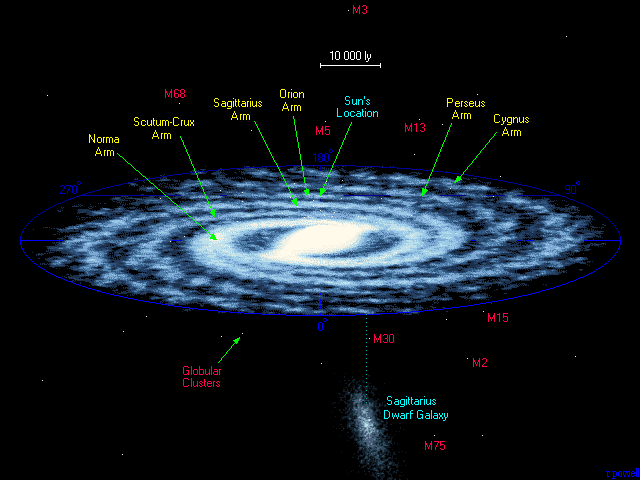
When matter is drawn to a singularity, it heats up. The heat spectrum indicates white as the hottest, not black (black indicates an absence of heat). At gamma, the heat would be in the high bright white range. So a black hole is not black, it would be bright white, we just can't see it because gravity prevents the light from reaching our detectors. Now for the "Hole". When matter coalesces, it starts to spin because that matter doesn't hit the gravity source all at the same time at the same angle. Its why planets, stars and moons have a spinning motion. Its why the solar system spins around the Sun. The solar system is the accretion disk of the star we call the Sun. The Milky Way is the accretion disk of Sagittarius A and so on. Its a fundamental fact associated with gravity. The gravity of a black hole is so great it captures photons (which are both a wave and a particle). They spin. The black hole is a singularity that is spinning and captures matter on an angle to its center (resulting in spin). As matter gets pulled in, that matter heats up. It contacts the center and fuses under great heat and pressure. Its a white hot singularity that grows as matter continues to accumulate. Just like the Sun, the accretion disk is around its center of spin. Above and below the Sun, there are no planets or moons. The gamma jets that are detected on the poles of a black hole is due to the fact that accretion is happening at the equator which is where the highest gravity manifests. At the poles, the gravity is less and gamma radiation can escape. If a black hole were actually a hole, the movement of matter would be spherical with no equator and no polar jets. The polar jets determine it is a singularity (an object) and not a hole. As mass accumulates the singularity expands in size spherically. Its the spin that allows the polar regions to have a weaker gravity but its not really a weak gravity, gamma waves are just really fast. Could a black hole be a disc? It could be disc-like but only as it gains mass. As the mass fuses, the singularity continues to grow spherically. The singularity isn't a hole bunch of mass stuck together. The singularity is one single object and mass fuses to it. If you were to starve a black hole from mass, it would eventually no longer appear black, it might appear white hot but would be supermassive. It certainly will not be a hole. If it were a hole in our space-time, it would no longer accumulate mass. Mainly because it would no longer be in our space-time. It might appear as a void in space. There are known voids in the Universe. We named them. They are huge areas of space with no detectable matter. There is no indication of movement of known mass towards these regions. 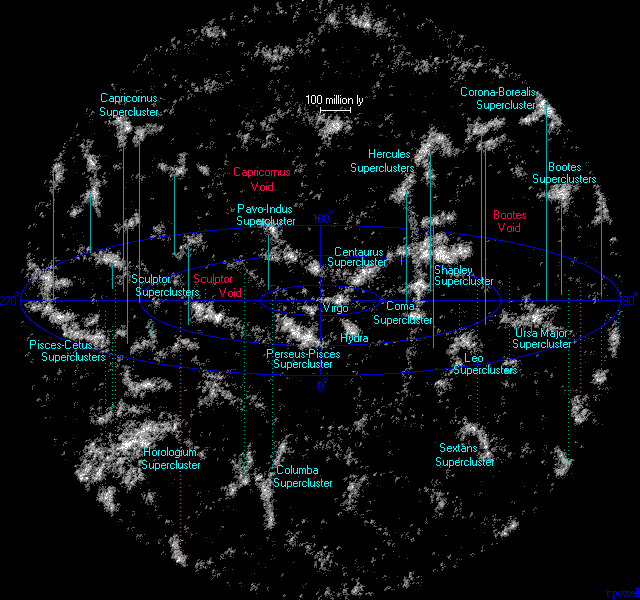
Our perspective makes the Universe round. 13.7 billion light years is the most distant we can detect. Its the limit of our understanding and our perspective. 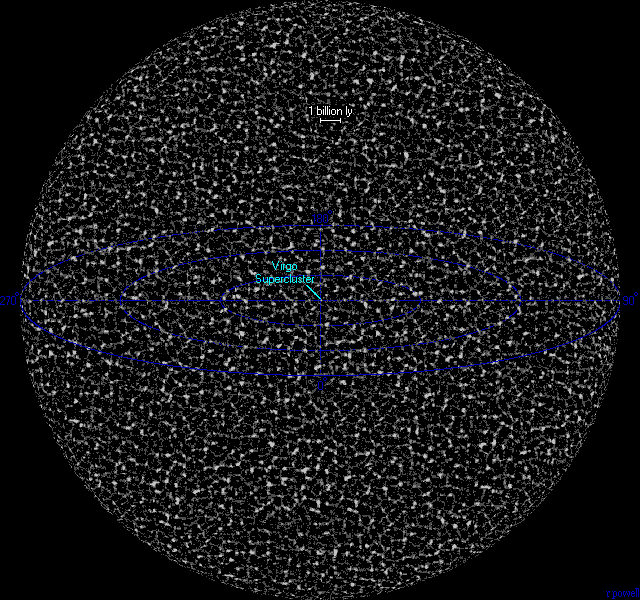
All I'm saying is perhaps it is the limit. If it is, and the Universe is expanding in scope, It is all happening within a specific area that is not expanding so, this means it must be imploding or expanding within itself. The implosion might be below quantum but universal everywhere within the initial bubble. This would present itself to anyone within the bubble as an explosion. Our assumption is based on possibly flawed perspective. |
|
|
|
|
|
Something just occurred to me.
If we are ever going to go to another star, our journey should start at the Sun's poles and move outward from there. Its gravity would be the weakest at the poles and we may find a jet stream there that helps us get the needed speed boost. Do a gravity assist around the Sun's poles and zip off perpendicular to the plane of the solar system. The angle would be critical but it might be possible. 
It would take much more thrust to leave the solar system in the direction of the Sun's travel than thru its tail. It would be faster but take more thrust. However, if we move outward from the pole then thrust in the direction of the tail we could actually leave the system for interstellar space. It would take longer in time but less in thrust. |
|
|
|
|
|
I have always been a fan of sine waves. Applying this idea to the universe conveniently gets rid of having to say that time itself started at the big bang. Instead the size of the universe varies as a sine wave. At the moment we are at the expansion phase. If my theory is right the universe will one day reach a maximum size and then begin to shrink. Eventually it will be smaller than a pin head and an almighty explosion, it all starts again. In true sinewave fashion, tshe next time around there will be more anti-matter than matter. I doubt our science will ever be able to prove that one way or the other, unless the human race continues to live past the point when the maximum size is reached and the universe starts to shrink.
If I'm right then I'm glad we're not near the end of the shrinking phase.... |
|
|
|
|
|
I have often thought about this because I've never been satisfied with the Big Bang idea. Unfortunately, I've never been able to come up with a good alternative explanation either.
As far as the edge of the Universe, we need to consider that photons do lose energy over time. It takes a VERY long time in a vacuum. However, there are many things in space that photons can come across that might make them lose energy. Of course, photons lose very little energy from virtually all of these impediments and influences, but it is a loss none the less. If we consider that 13.7 billion years is our limit of visible light, and that this is a radius from our location, I think it would be safe to assume that it takes roughly 13.7 billion years for a photon to lose sufficient energy as to no longer be visible from our location in space. If we move 1 billion light-years away, we might find ourselves able to sense or view another 1 billion years of space. We also are not entirely sure about the existence, purpose, or influence of dark matter and dark energy yet. When it comes to dark energy, we aren't even sure of its origins. It could be one of the missing links....or it could just be theoretical b.s. But if I were to follow Occam's Razor, I would posit that light simply loses too much energy to remain visible from our vantage point after 13.7 billion years of travel through space. |
|
|
|
|
|
Interesting ideas...
Something that I always pondered is the fact that stars are spherical. If you take a ball and put pins all over the surface so they point outward from the center you have the light coming from a star. From a distance, we detect a small signature of light that just happens to align with our detectors. We are seeing one pin from the sphere of pins that actually exist. Directly on the other side of the ball is another pin pointing directly away from our detectors. If the light we detect is 13.7 billion years old, chances are there is also light from the same source moving away from us that has also been travelling for 13.7 billion years in the opposite direction. At the very least, the Universe is 27.4 billion light years across. The key in all of it is the fact that we have only made observations from this location at this time. Move sideways a billion light years and you might see something very much different but if you didn't, that would suggest that everything within the Universe is happening within a confined space. I think gravity is the defining force related to implosion. Dark matter/energy is a mystery because science can't figure out the gravity that shows in Universe dynamics. This is because all models are focused on the idea of explosion and not on implosion. If implosion is the governing force, the movement we see might be explained. Not implosion as a centered event, implosion at a quantum level everywhere. Governed by mass and gravity. Thousands of cosmological decades from now the Universe may be a collection of dead super massive black holes slowly converging. If you think about star formation, gravity coalesces mass to the point the mass ignites under pressure and heat. If you look around at the Universe, its happening everywhere on many scales. Gravity is causing mass to collect. The action is directly opposite of an explosion. Implosion is a fundamental nature of the Universe. Sure stars explode when they reach a certain mass but all that material is then collected again in other stars. Our very Sun is a 2nd generation star. Black holes swallow up matter as they grow. Eventually, the only thing left in this Universe will be black holes (Singularities) that will eventually combine as one. Sorry, that is an implosion, not an explosion. |
|
|
|
|

Look at the above picture. If you can't see the pic here it is by url http://www.atlasoftheuniverse.com/galaxy.gif The Milky Way galaxy is spiraling towards the center Sagittarius A black hole. The center is white hot because as the mass gets closer it heats up as it increases speed in a dense region. Out on the edges, you can see the results of the gravity on the matter, spiraling down. Our solar system is also spiraling towards the Sun. If given enough time, eventually our entire star system would be within the Sun, everything, every planet, asteroid, moon, comet and grain of dust. It won't happen because there isn't enough time, the Sun will nova long before it happens. Eventually, given enough time, all the matter in the Milky Way galaxy will spiral onto Sagittarius A. That won't happen because this galaxy will eventually collide and merge with Andromeda galaxy. Andromeda's and the Milky Way's super massive black holes will combine and all the matter from both galaxies will start to move towards that. All this is what looks like an explosion from our point of view but is an implosion on the scale of galaxies. We don't see the 'stars' as dynamically moving but everything in the Universe is moving. As time marches on, the galaxies will merge, galactic super-clusters will merge and all of the resultant structures will merge into one massive object. The coalescence is an implosion. |
|
|
|
|
|
We are on a point.
Looking off into the one side we see 13.7 billion years into the past. Looking off to the other side, we see 13.7 billion years into the past. No matter which angle we look, we see 13.7 billion years into the past. Light is multi-directional. So if we observe a light source 13.7 billion light years away, that same source also has light that traveled 13.7 billion light years in the opposite direction that we can't detect because it is moving away from us. This puts us directly in the center of the Universe. How likely is that? The only thing we can understand is our view according to our relativity. It MUST be an error, but what if it isn't? Detecting a sphere's edge from inside the sphere equally in any direction from a point in the center indicates that the edge of the sphere is not expanding. However, we also know that matter and energy is expanding within the sphere. Where might it be expanding to? One idea is implosion at a sub-quantum level. Another is a perpetual decrease in the size of the matter as a whole. Since all matter within the sphere is getting smaller, so are we. If different areas within the sphere are shrinking at different rates relative to other areas, it would look like an expansion from a relative point of view. It throws every calculation off in the scope of understanding the nature of the Universe but would allow for accuracy in calculating relatively close dynamics. So, we could calculate paths and orbits and plot courses. The more distant the destination, the more difficult to calculate the dynamics of navigation. Relatively, we are looking at a mere snapshot in time and movement. 1,000 years will not reveal anything significant. We need to study the Universe for hundreds of millions of years just to get a glimpse of its actual nature. If you take a picture of a car on a highway with a shutter speed of 1 million FPS and look at two pictures 1 millionth of a second apart, nothing significant will change. The car will 'appear' to be sitting still. A bird would 'appear' to be hovering in the air. We are looking at a single picture 13.7 billion years old at a shutter speed of 13.7 billion 'frames' per second. If we look at 300 pictures together, we are still not going to see significant movement relative to the Universe. There are 13.7 billion pictures to look at. We only have a photo album that has at best 300 years of information. We can calculate but if our calculations are based on explosion and not implosion all the calculations will be inaccurate. We need a much bigger photo album. |
|
|
|
|
|
Tom, I didn't read all of that yet, but I get the gist.
In fact, I've wondered just how many galaxies have a black hole at the center. Our galaxy has a super-massive one. Hence, the spiral disk. And I have considered the concept of implosion previously as well. There's just one problem... Gravity doesn't just attract. It repels. For two reasons... 1) Two masses of equal gravity with negate each other's pull. 2) Because most masses are moving and/or spinning, they are prone toward a slingshot effect rather than maintaining a direct pull. Therefore, the expansion of the universe does not need to be due to an explosion. It could just be a natural interaction of gravity fields, even if only partially. I also have a difficult time understanding a super-massive black hole because once mass reaches a certain level, the implosion generates an explosion due to the shockwave created by compaction. It's a "bounce back" or echo, if you will. The shockwave deflects off of the core, shattering the mass apart except for the core itself. Technically speaking, this means mass would be lost....but that also means density would increase since the core is densest. But how can a supernova star lose mass if the core's gravity is so strong that even light cannot escape? The escape velocity would need to be greater than light speed. I believe there are massive holes in our science theories. For instance, based on evidence and on what I said above, the prevailing belief that nothing can travel faster than light MUST BE WRONG. It's either that, or our beliefs about black holes are fundamentally wrong. For instance, what if a super-massive black hole isn't actually a singularity? What if it is a group of highly dense masses whose gravity offset each other's pull? What if they orbit around each other, creating an even greater gravitational pull on the masses surrounding them? Furthermore, we know that black holes actually do expel energy and possibly mass in the form of a quasar beam. The beam appears to be expelled from the poles. Therefore, we have evidence that something actually CAN escape the pull of a black hole. So yes, what you posit is interesting. It highlights the limits of our scientific thinking. Science has a way of getting "stuck in the box". |
|
|
|
|
|
Tom, I didn't read all of that yet, but I get the gist. In fact, I've wondered just how many galaxies have a black hole at the center. Our galaxy has a super-massive one. Hence, the spiral disk. And I have considered the concept of implosion previously as well. There's just one problem... Gravity doesn't just attract. It repels. For two reasons... 1) Two masses of equal gravity with negate each other's pull. 2) Because most masses are moving and/or spinning, they are prone toward a slingshot effect rather than maintaining a direct pull. Therefore, the expansion of the universe does not need to be due to an explosion. It could just be a natural interaction of gravity fields, even if only partially. I also have a difficult time understanding a super-massive black hole because once mass reaches a certain level, the implosion generates an explosion due to the shockwave created by compaction. It's a "bounce back" or echo, if you will. The shockwave deflects off of the core, shattering the mass apart except for the core itself. Technically speaking, this means mass would be lost....but that also means density would increase since the core is densest. But how can a supernova star lose mass if the core's gravity is so strong that even light cannot escape? The escape velocity would need to be greater than light speed. I believe there are massive holes in our science theories. For instance, based on evidence and on what I said above, the prevailing belief that nothing can travel faster than light MUST BE WRONG. It's either that, or our beliefs about black holes are fundamentally wrong. For instance, what if a super-massive black hole isn't actually a singularity? What if it is a group of highly dense masses whose gravity offset each other's pull? What if they orbit around each other, creating an even greater gravitational pull on the masses surrounding them? Furthermore, we know that black holes actually do expel energy and possibly mass in the form of a quasar beam. The beam appears to be expelled from the poles. Therefore, we have evidence that something actually CAN escape the pull of a black hole. So yes, what you posit is interesting. It highlights the limits of our scientific thinking. Science has a way of getting "stuck in the box". Wonderful discussion! Out of order from your quoted post but here's my opinion... The black hole/white singularity thing is interesting. As for the gamma jets that have been detected at the poles of a black hole, if a singularity is collecting mass, it has the highest gravity at its equator. I did address this earlier but you might have missed the concept I posted. The poles of the singularity would be the regions of the least gravitational influence. Look at our own solar system. There are no planets in the area of the Sun's poles. I think all stars have polar discharge. All for the same basic reason, the equator has the highest gravitational influence. On the idea of super massive gravities equalizing, I haven't seen any observations that indicate this. Two equal mass stars can exist in orbit of each other but those dynamics have speed and rotation properties which cause them to stabilize their orbits. Large mass stars do collide and merge (eventually). Nobody really knows what is going on inside a black hole. Your guess is as good as mine or Stephen Hawking's (RIP). Sagittarius A, at the center of the Milky Way collects all matter in a spiral pattern on an equatorial plane. Stars, planets and dust. The Milky Way is what is known of as a "Barred Spiral" galaxy. The 'bar' is the region in the circular spiral where matter directly goes to the black hole. It takes a right angle turn. As that matter gets closer to the black hole, it speeds up and heats up. That's what we understand about the 'barred' effect. At the "Norma" arm, matter is moving so fast it starts to heat up. The "Orion Arm", where we currently are, will eventually merge with the "Sagittarius Arm" as matter slowly spirals towards the black hole at the center. As for the 'other' type galaxies in our region, they are gravitationally bound to the Milky Way as they orbit the Milky Way. Eventually they will be absorbed into our galaxy. They may or may not contain their own black holes. Any black holes they might have are of less mass than Sagittarius A. Andromeda's black hole is five times more massive than the Milky Way's black hole despite the galaxy being less than five-thousandths the mass of the Milky Way. Some galaxies, however, lack any supermassive black holes in their centers. When the two galaxies collide, the two black holes will merge into one, they won't bounce off each other. The collision will cause a shockwave which will push the matter out but the resulting increase in gravity will again cause a spiral descent towards it. That spiral may be on a different plane entirely. It all depends upon which angle the two collide. The resulting galaxy will again spiral in on the equator. Higher mass would result in a faster spiral at an increased inclination. Every star has a 'pressure' bubble against the interstellar space. The matter in the galaxy is spiraling down towards the center. This means stars are moving. This 'pressure bubble' is what we call the heliosheath. 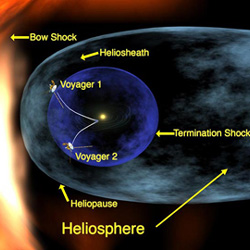
http://www.universetoday.com/wp-content/uploads/2005-0524voyager-sm.jpg The "Termination Shock" is the inner star bubble. The "Heliopause" is the outer bubble against interstellar space which is what the star is moving thru. When the interstellar void and the heliopause encounter each other it results in a "Bow Shock" The Heliosphere" is the trailing end of the "Heliosheath". The fact that it exists in the teardrop shape we observe indicates the movement of the Sun thru interstellar space. A resistance of flow. If another star of equal mass were to move towards the Sun, the two heliospheres and their termination shock bubbles might prevent the two stars from actually merging, it all depends on the speed and angle of each. This indicates that the interstellar space beyond the Sun's influence has mass/material that can provide a resistance to movement. Otherwise there would be no teardrop formation. The Sun also moves up and down in its spiral plane. 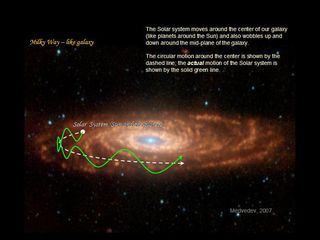
https://cdn.mos.cms.futurecdn.net/enGMithCSvErnMRhANLHfX-320-80.jpg So it is moving at a constant angle as well as a spiral trajectory. Any star heading towards the Sun need's more mass than the Sun and sufficient speed to invade all the bubbles. On a side note; Andromeda and the Milky Way will merge resulting in a movement like two billiards racks of balls being pushed towards each other. Only the two black holes will actually merge unless galaxies also have 'bubbles'? 
https://media1.giphy.com/media/a3NoppTR9LWTe/giphy.gif |
|
|
|
|
|
in the beginning there was no beginning there's always been always there always will be
the eternal perculation allows for new and the rest perculation of old for example the death of our son and the swallowing up of our earth so what was. regarded as a prank by a person with a placard whitch read the end of the world is nigh, turns out that eventually is true! |
|
|
|
|
|
Edited by
Tom4Uhere
on
Mon 04/01/19 08:53 PM
|
|
|
Its sad to read that you lost your son.
I hope you find peace. n the beginning there was no beginning there's always been always there always will be
Could you expand on this a bit? Are you saying that time is irrelevent to movement? the swallowing up of our earth so what was. regarded as a prank by a person with a placard whitch read the end of the world is nigh, turns out that eventually is true!
There is a train of thought that explores the possibility that all possible events will play out in reality in the cosmological decades of the Universe. Which means anything that can be imagined can come true in reality eventually. Are you implying that our present reality is yet one possible reality that is playing out in a Universe of infinite realities? I find this interesting. |
|
|
|
|
|
Stephen Hawkins proposed and retracted his theory of the big bang.
And as far as I know Einstein disproved the newton theory of gravity. As far the the edge of the universe, how can you find the edge when your measuring device can only reach so far? That's like saying your table only measures a foot across cuz you only have a foot long ruler? |
|
|
|
|
|
When I was at school the 'universe' was quite simply everything that was, hence the word, 'universal'. It was assumed that if you could travel through space, in any direction, you would travel for ever and never reach the edge, because there is no edge.
These days people (including me!) talk about 'the edge of the universe' a thought that makes me uncomfortable because you then have to answer the question, 'if you could travel to the edge of the universe, what happens at the edge and what is beyond that edge? If you travel to the edge of the land you are on you will come to the sea. If you can construct a boat to sail across the sea, you will eventually come to more land to explore. If you keep doing that in the same direction you will eventually return to where you started. Is there an equivalent situation in space? If you keep travelling in the same direction, you can't come to the edge because there isn't one. You would eventually return to your starting point if travel like that that were possible. |
|
|
|
|
|
When I was at school the 'universe' was quite simply everything that was, hence the word, 'universal'. It was assumed that if you could travel through space, in any direction, you would travel for ever and never reach the edge, because there is no edge. These days people (including me!) talk about 'the edge of the universe' a thought that makes me uncomfortable because you then have to answer the question, 'if you could travel to the edge of the universe, what happens at the edge and what is beyond that edge? If you travel to the edge of the land you are on you will come to the sea. If you can construct a boat to sail across the sea, you will eventually come to more land to explore. If you keep doing that in the same direction you will eventually return to where you started. Is there an equivalent situation in space? If you keep travelling in the same direction, you can't come to the edge because there isn't one. You would eventually return to your starting point if travel like that that were possible. Cosmic Anisotropy VS Homogeneity and Isotropy http://curious.astro.cornell.edu/about-us/101-the-universe/cosmology-and-the-big-bang/general-questions/574-what-do-homogeneity-and-isotropy-mean-intermediate http://www.space.com/25673-universe-expansion-real-time-cosmology.html http://phys.org/news/2011-09-evidence-spacetime-cosmological-principle.html an anisotropy deviation of 0.76 and 0.79, respectively, and a preferred direction of (309°, 21°) and (314°, 28°), respectively. Our 'horizon' is light. We know how fast light is and how far it can travel in a vacuum during a year. Right now, we have detected a sphere of light that is 13.7 billion years old. That is 13.7 billion lightyears, the distance light travels in a year times 13.7 billion. We don't detect light older than that in any direction. The size (and edge) of the Universe is an assumption made based on our current understanding of the properties of light (waveforms). It assumes many things including the assumption that a photon does not decay over time. The only way to be sure about the edge of the Universe is to move 1 billion light years from our current posistion and measure the light. If it is still 13.7 billion years old in every direction, there is no edge but if it measures 12.7 billion years in one direction and 14.7 billion years in the opposite direction then you have detected an edge. It could be the edge of light or the edge of the Universe, no way to be sure unless you go there. So, the edge of the Universe will remain a mystery until we are able to move our detectors significantly away from our point of origin. |
|
|
|
|
|
When I was at school the 'universe' was quite simply everything that was, hence the word, 'universal'. It was assumed that if you could travel through space, in any direction, you would travel for ever and never reach the edge, because there is no edge. These days people (including me!) talk about 'the edge of the universe' a thought that makes me uncomfortable because you then have to answer the question, 'if you could travel to the edge of the universe, what happens at the edge and what is beyond that edge? If you travel to the edge of the land you are on you will come to the sea. If you can construct a boat to sail across the sea, you will eventually come to more land to explore. If you keep doing that in the same direction you will eventually return to where you started. Is there an equivalent situation in space? If you keep travelling in the same direction, you can't come to the edge because there isn't one. You would eventually return to your starting point if travel like that that were possible. Lemme put this a different way... Lets say you are standing on a raft in the middle of the ocean. In any given direction your horizon is roughly 3.0 miles at 6 feet high. You start paddling in the direction of the sunset. The Pacific Ocean is 63,800,000 square miles. Moving 15 miles is not going to change your view. You must move a significant distance before you can detect any edge on your horizon. However, when you are within 3 miles of the edge, every mile you move reveals a closer and closer shoreline. We are on an ocean. Our horizon is 13.7 billion lightyears. To find the edge, we must move our horizon 'view' within our limit of detection. The same ratio could be 1,276,000 times our view. So, if we were to imagine our horizon of the Universe is the same as our horizon on the ocean. We would need to move 1,276,000 times our current 'view' to reach the edge. That is 1,276,000 times 13.7 billion lightyears. But, that is also assuming the vastness of space equates to the area of the Pacific Ocean at our detection of the horizon. The reality could be much less or much more. Nobody knows because we don't have the technology to look. |
|
|
|
|
|
Edit to note:
For all the savants and big brains out there in M2 land, my numbers are off. I took the (63,800,000 square miles) as the area of the Pacific Ocean but if you are in the center it would be less than that to reach the edge. I used the ratio of 3 to 63,800,000 to get the figure of 1,276,000. My math is off but the result remains as a very huge distance. Mind boggling huge! I would love to see someone give accurate figures to the scenario. Frankly, I'm not interested in do the math. On another look; The nearest star to the Earth is appx 8 light minutes away. That star is known as Sol (Sun). That means, if it suddenly went dark, it would be about 8 minutes before its light stopped hitting the Earth. Alpha Centauri A and Alpha Centauri B, which form a binary pair are an average of 4.3 light-years from Earth. A third star is Proxima Centauri. It is about 4.22 light-years from Earth and is the closest star other than the sun. This means it would take about 4 years for their light to stop hitting the Earth. The light we detect at our current limits is 13.7 BILLION years old. Just because we detect light that far away at that age doesn't mean no new light has been made, it just means that it hasn't had time to reach us yet because it is 13.7 billion lightyears away. We are looking back in time but that doesn't mean time isn't continuing there. We just can't see it because it hasn't got here yet. We have absolutely no idea what is happening 13.7 billion light years from us right now. Just to put it n perspective a bit; .7 billion years is 700,000,000 years. We have been looking less than 1,000 years and measuring less than 100 years with any accuracy to 13.7 billion lightyears out. The space at our current observational limit has also been growing for the last 13.7 billion years. Entire star systems have formed, shined and died in 13.7 billion years. They will be long dead before their light gets detected. Personally, I believe the 'edge' of the Universe is within the atom's particles. The very energy that makes up matter. That the Universe is a constant eruption of energy that coalesces into matter. It is happening everywhere, constantly, all at once. |
|
|
|
|











